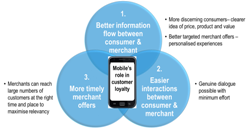
Mobile app latency in Europe: French operators lead; Italian & Spanish lag
Our latest analysis shows staggering differences in ‘app-lag’ (the time it takes for an app to get a response over the Internet) across France, Germany, Italy, Spain and the UK, and twenty mobile operators. This has significant consequences for customer data experiences, and potentially operator market performance too. Operators in France, particularly Bouygues and Free, are delivering a superior customer app experience while 3 in Italy and Movistar in Spain are European laggards. (October 2015, Foundation 2.0, Executive Briefing Service.)

